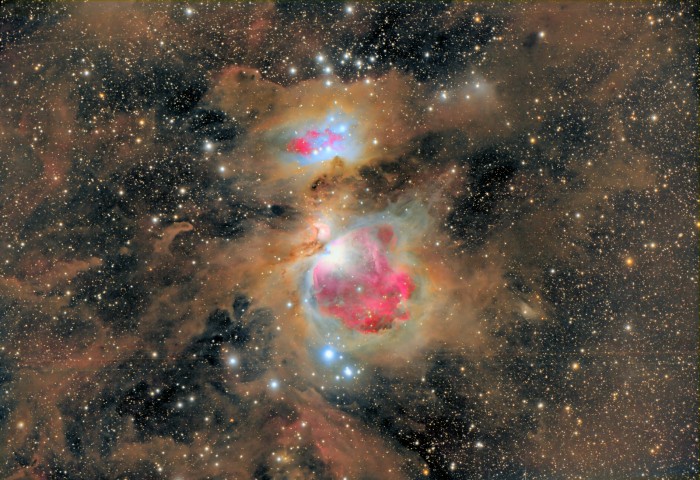Dust of the Orion Nebula
From NASA APOD:
What surrounds a hotbed of star formation? In the case of the Orion Nebula — dust. The entire Orion field, located about 1600 light years away, is inundated with intricate and picturesque filaments of dust. Opaque to visible light, dust is created in the outer atmosphere of massive cool stars and expelled by a strong outer wind of particles. The Trapezium and other forming star clusters are embedded in the nebula. The intricate filaments of dust surrounding M42 and M43 appear brown in the above image, while central glowing gas is highlighted in red. Over the next few million years much of Orion’s dust will be slowly destroyed by the very stars now being formed, or dispersed into the Galaxy.
Knitting Needles in Space
Expedition 30 astronaut Don Pettit uses knitting needles and water droplets to demonstrate physics in space:
They have surprisingly many knitting needles on the ISS…
Red Aurora Australis
After chasing it for more than two years I was finally rewarded with two displays of Aurora Australis (Southern lights) within a week visible from Mornington peninsula, not far from Melbourne. The nights were warm an clear and the Moon was not in the sky either - I could not have asked for better conditions.
The red color of this aurora is caused by the charged particles from the Sun exciting oxygen atoms high in the Earth’s atmosphere. Hopefully there will be more to come as Sun’s activity increases in 2012-13.
by Alex Cherney
Spiral Galaxy NGC 1073
The NASA/ESA Hubble Space Telescope has taken a picture of the barred spiral galaxy NGC 1073, which is found in the constellation of Cetus (The Sea Monster). Our own galaxy, the Milky Way, is a similar barred spiral, and the study of galaxies such as NGC 1073 helps astronomers learn more about our celestial home.

